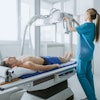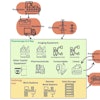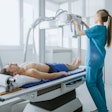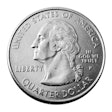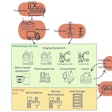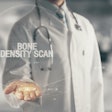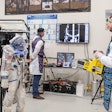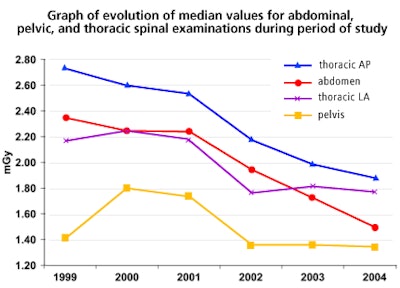
Adequate training of radiographers (radiologic technologists) and patient dose audits are the most effective ways to keep radiation dose as low as possible when a facility converts from film-screen radiography to computed and digital radiography (CR/DR).
Researchers from Universidad Complutense de Madrid and San Carlos University Hospital, both in Madrid, saw the value of such efforts in a survey of more than 204,000 patient dose values from film-screen radiographic patient exams and those from CR. Their findings are published online in Radiology (March 13, 2007).
The study retroactively reviewed patient radiation dose prior to and after installation of CR technology at the university's hospital. Patient dose results from 1997 to 1999 were "scarce," the report noted, when the facility used film-screen radiography, because radiographic data was documented manually for quality-control purposes only. At the time, the hospital was required to take only a sample of 10 patients from each imaging modality per year.
In 1999, the hospital installed CR systems and, by 2001, had implemented a dose reduction program, collecting radiographic parameters, calculating patient radiation doses, and commencing a training program for its radiographers.
Before 2001, there was no program for radiographers to effectively optimize patient radiation dose or image quality beyond the vendors' recommended guidelines. Thus, the hospital's medical physics service department initiated its own internal training program in 2001. Radiographers were trained for 10 hours over the course of one week in topics such as digital imaging, CR and flat-panel DR, patient dose management in CR, and radiation protection.
During the first three months of 1999, the study found an overall increase in patient radiation dose in CR exams compared with film-screen radiography.
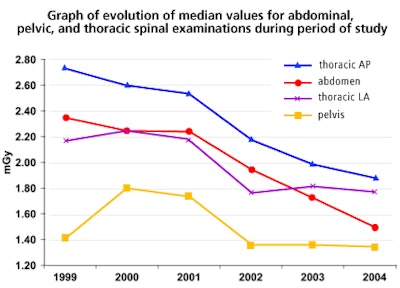 |
| After uneven results following the implementation of CR in 1999, a slow decrease in median entrance dose values occurred for analyzed examinations from 1999 to 2001, with considerable decreases after training activities and routine QC operation of online audit system in 2001. AP = anteroposterior, LA = lateral. Figure 1. Vaño E, Fernández JM, Ten JI, Carlos Prieto C et al, "Transition from Screen-Film to Digital Radiography: Evolution of Patient Radiation Doses at Projection Radiography," Radiology 2007, 10.1148/radiol.2432050930. |
"It is not surprising that average doses increased for some examinations when CR was introduced," the researchers stated, adding that the increases were "very apparent for chest and lumbar spinal examinations, the only examinations for which data were available before 1999."
Because the hospital staff had "no or limited experience" with digital radiographic technology, researchers surmised that radiographers "probably attempted to avoid noisy images by using milliampere-second settings higher than necessary for good image quality."
In addition, radiographers also were prone to mistakenly use low kilovolt peaks to boost image contrast, as well as short source-to-skin distance (SSD), even after their CR and digital imaging training.
During the hospital's dose reduction efforts from 1999 through 2003, median values decreased by 50% for posteroanterior (PA) and 37% for lateral chest radiography. The study concluded that the "dose reductions could be interpreted as a benefit of training conducted by the hospital's medical physics service staff and application of the online patient dose audit system."
From 2003 to 2004, the study found slight increases in dose for chest and lumbar spinal examinations, "suggesting a need for more training activities, especially for radiographers who joined the department after 2001."
Currently, the report stated, the median entrance dose values for CR exams monitored by the hospital's radiology department range between 15% to 38% of the recommended European diagnostic reference levels for conventional film-screen radiography, and 28% to 41% of the reference levels recommended by the American Association of Physicists in Medicine (AAPM) in the U.S.
The results also support recommendations by the International Commission on Radiological Protection (ICRP) for training of radiographers and frequent patient dose audits.
By Wayne Forrest
AuntMinnie.com staff writer
April 23, 2007
Related Reading
CR/DR image quality: Issues and concerns, April 12, 2007
Strategies for reducing 'dose creep' in digital x-ray, April 11, 2007
Study suggests ways to cut CR radiation, March 5, 2007
Korean rads find no edge for high-res CR in chest exams, January 22, 2007
Study: DR delivers lower radiation dose, November 7, 2006
Copyright © 2007 AuntMinnie.com
